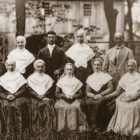There were precautions taken in an attempt to prevent fires. The Shakers favored brick for many of their workshops, as they sometimes were the sites of heavy manufacturing. Wood-burning stoves and the later use of steam engines, boilers, and machinery also encouraged the use of brick and stone. At Watervliet, buildings like the herb house were built near the creek; since fires were used to dry the huge amount of herbs harvested and processed by the community, situating the small building near water was a smart move. Still, the communities were by no means fireproof.
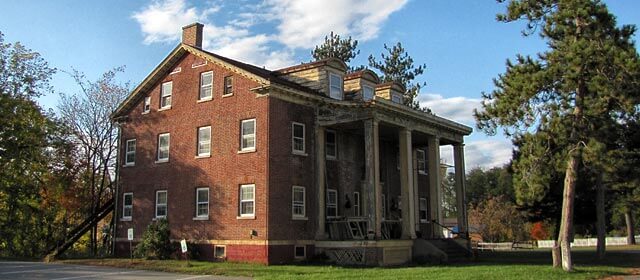
A string of fires broke out throughout Shaker communities in the 1870s. In the fall of 1872, there were several fires that ravaged Watervliet. Sister Phoebe Buckingham recalls the first fire on October 28th: “About 9:30pm as all were in their first slumber, we were awakened by bells ringing – the 2nd [West] Family was on fire. Nearly every brother, all hired men and some of the sisters went to help if possible.” Brother Augustus Blase called it “the awfullest [sic] calamity that ever fell upon this family.” The arsonist destroyed the barn and its contents, resulting in about $10,000 worth of damage. On November 5th, the South Family lost all of their barns except one, as well as hay, grain, and straw. All told, they lost $12,000 of property and goods. “Bells awoke at 4:30am,” Phoebe writes. “Most of brothers and many sisters rushed over to help. Stanton B. saw two men around Church Family Office and hailed them but they did not answer and ran off . . . We fear and tremble for our fate.”
The Watervliet Shakers, fearing they would lose everything to the arsonists’ blazes, had to take action. They decided to go see the Albany Chief of Police. In the meantime, the Believers’ neighbors helped to keep watch. They used passwords to ensure no one was accidentally shot in the dark. “Elder Daniel watched all night and two of the [hired] men,” Phoebe Buckingham records. “They have a password whenever they meet so they may not get shot for burglary.” Eventually police officers from Albany took over the patrolling. One of them, an officer by the last name of Wands, disguised himself as a sewing machine salesman and canvassed the neighborhood for a few days, trying to find information on the arsonists; his efforts were unsuccessful.
Accidental fires were set, but violence against the Shakers was also the cause of many destructive blazes. In the west, a barn was set on fire by the angry family of a young woman who had joined the community. In Mount Lebanon in 1875, Charles Harris, a hired man, set a fire that caused a loss of $100,000. The Shakers had no insurance. Community members and neighbors saved two of the buildings by covering themselves with wet carpets for protection.
In 1914, the Church Family barn complex was burned to the ground by arsonists. Sister Anna Goepper at the South Family writes that they were helping to build a new barn: “Hugo and hired men hauling cement from Albany for Elder Josiah’s new barn foundation at CF, barn having been set on fire and burned with horses, cows, etc. . . .” The destroyed barn complex consisted of three buildings: the North Barn (built in 1788), the South Barn (1798), and the Sheep Barn (1811). The new barn was constructed to include the latest agricultural technology and included a mechanical track that carried manure from the cow barn to the manure shed for storage as fertilizer. The Church Family only remained open another decade after the barn was raised. Next year, the Shaker Heritage Society will celebrate the 100th anniversary of the raising of the barn.
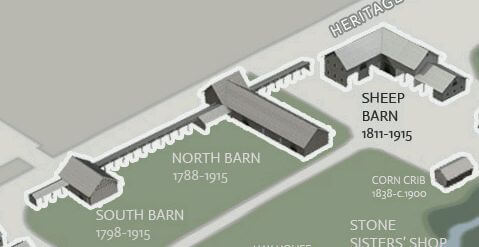
Two last huge fires tore through the North Family at Watervliet in the 20th century. That part of the community closed and the property sold in 1919. On April 27, 1927, a strong wind fed a fire that destroyed thirteen of the remaining buildings there. Five years later, another blaze was set at the property (which at that point belonged to the Shaker Ridge Country Club), destroying the last remaining Shaker buildings at the site. This was the last of the big fires at Watervliet.
